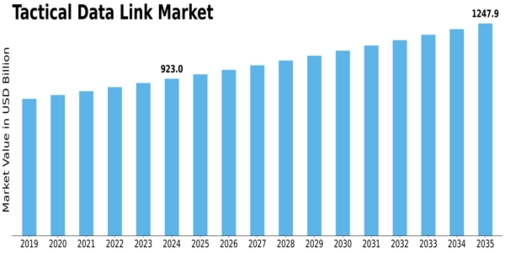In the evolving defense and aerospace communication landscape, the need for real-time, secure, and efficient information exchange is more crucial than ever. The Tactical Data Link (TDL) ecosystem has become an integral component of command and control systems, enhancing coordination among diverse military assets. The Tactical Data Link Market is advancing rapidly, driven by innovations that enable faster and more reliable communication in dynamic and complex operational environments.
As global defense agencies continue to prioritize network-centric operations, tactical data links ensure that aircraft, naval vessels, and ground units remain connected through encrypted and resilient communication channels. These systems enable interoperability, ensuring seamless sharing of situational data, improving mission efficiency, and enhancing decision-making capabilities.
Understanding the Market Dynamics
An in-depth industry analysis reveals that tactical data links play a pivotal role in achieving information superiority. They integrate advanced waveform technology, error correction algorithms, and frequency-hopping mechanisms to ensure secure and interference-free communications. The market’s evolution is influenced by modernization programs aimed at transforming legacy communication infrastructures into data-centric architectures capable of supporting real-time intelligence sharing.
The market’s size and share are shaped by the increasing adoption of integrated battlefield management systems. Governments are investing in interoperable systems that bridge different branches of armed forces and allied partners. This growth trajectory is further amplified by the proliferation of unmanned aerial vehicles and smart defense platforms that rely on robust communication links for coordination and control.
Emerging Trends and Growth Opportunities
Several trends are shaping the TDL market’s development. The most prominent include the rise of multi-domain operations, where air, land, sea, and cyber assets must communicate seamlessly in real-time. The shift toward software-defined radios and secure digital waveforms allows flexible communication management across different mission profiles.
Moreover, artificial intelligence and machine learning are being integrated into TDL frameworks to enable predictive network optimization and adaptive routing. These capabilities help maintain uninterrupted data flow, even in contested environments. The market’s growth also benefits from the increasing importance of situational awareness and interoperability among coalition forces.
Key Factors Driving the Industry Forward
- Enhanced Mission Efficiency:
TDLs enable faster data exchange between command centers and field units, supporting real-time decision-making and mission planning. - Interoperability:
Modern conflicts demand cross-platform collaboration. TDLs ensure seamless coordination between diverse systems and allied nations. - Cybersecurity Focus:
As threats evolve, encrypted and jam-resistant communication technologies are becoming fundamental to national defense. - Technological Modernization:
Continuous upgrades to hardware and software components are strengthening data-link capabilities across military platforms.
Market Outlook and Future Potential
The tactical data link sector is poised for steady advancement, fueled by technological progress and strategic defense priorities. Future architectures are expected to incorporate self-healing mesh networks, multi-layer encryption, and cross-domain interoperability standards. This will allow dynamic information flow among humans, machines, and autonomous systems.
As armed forces worldwide embrace digitization, the demand for tactical communication systems that ensure operational dominance and resilience will intensify. Consequently, stakeholders—from defense technology developers to research institutions—are aligning strategies with the anticipated surge in demand for advanced communication frameworks.
Frequently Asked Questions (FAQs)
Q1. What is a tactical data link system?
A tactical data link system is a secure digital communication framework used by defense forces to transmit real-time information such as sensor data, command instructions, and tracking information among platforms.
Q2. What drives the Tactical Data Link Market’s expansion?
The market is expanding due to modernization efforts, increased need for interoperability, growth of unmanned platforms, and a focus on secure, encrypted communications in mission-critical operations.
Q4. How is the future outlook for this market?
The outlook remains optimistic, with new opportunities emerging in cross-domain connectivity, network-centric operations, and next-generation data-link technologies.



